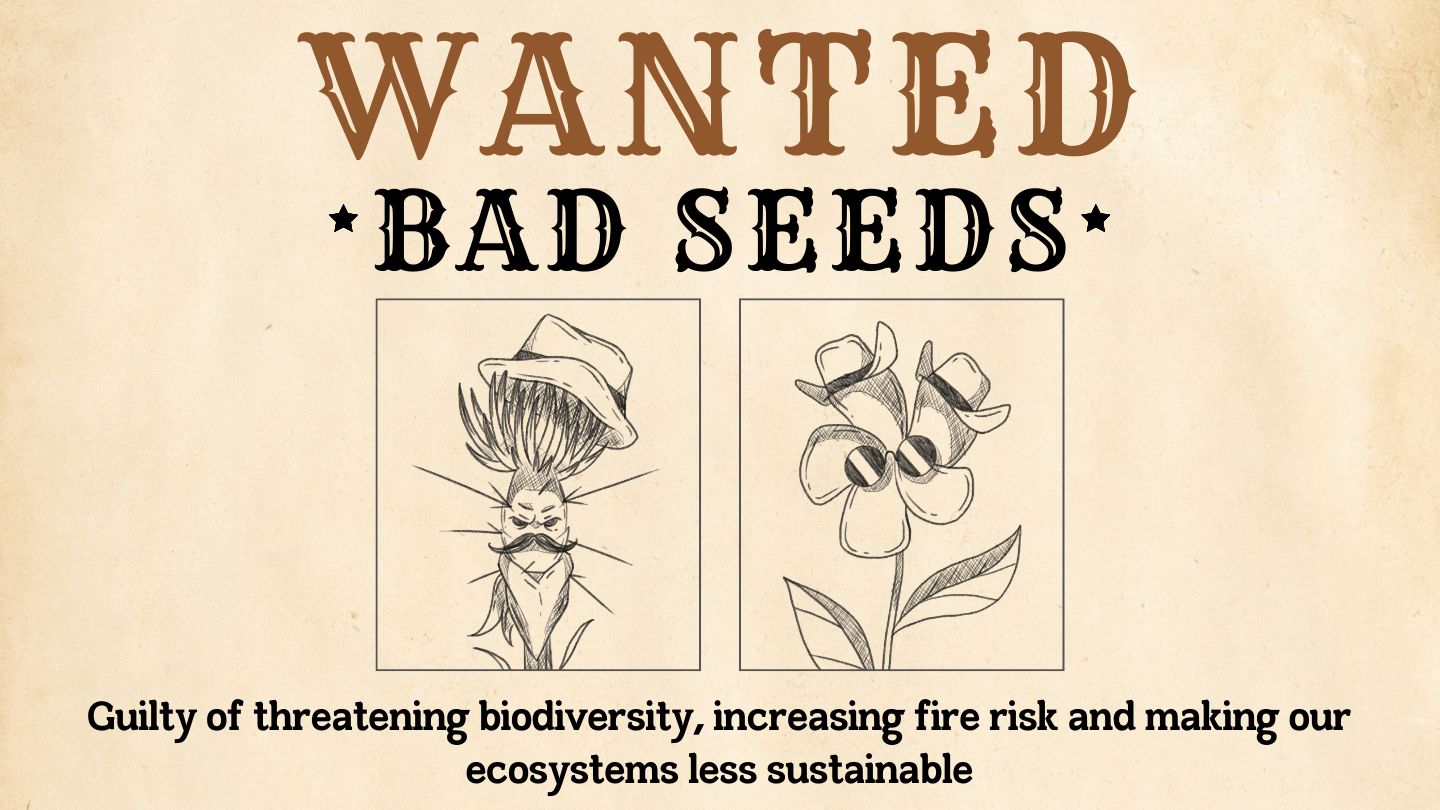Here at TreePeople, we work to transform degraded wilderness areas into healthy, sustainable, biodiverse ecosystems that provide countless benefits to our communities.
When we take on these large-scale restoration projects, a big part of the work involves managing invasive species—aka weeding out harmful, non-native plants that damage the ecosystem by crowding out native species.
In addition to threatening biodiversity, these plants can also increase fire risk and make our ecosystems less sustainable, since they’re typically not well-adapted to our climate.
We asked TreePeople’s Weed Team to give us the low-down on some of the WORST offenders they encounter in the field, so you know what to watch out for (and how to help stop the spread).
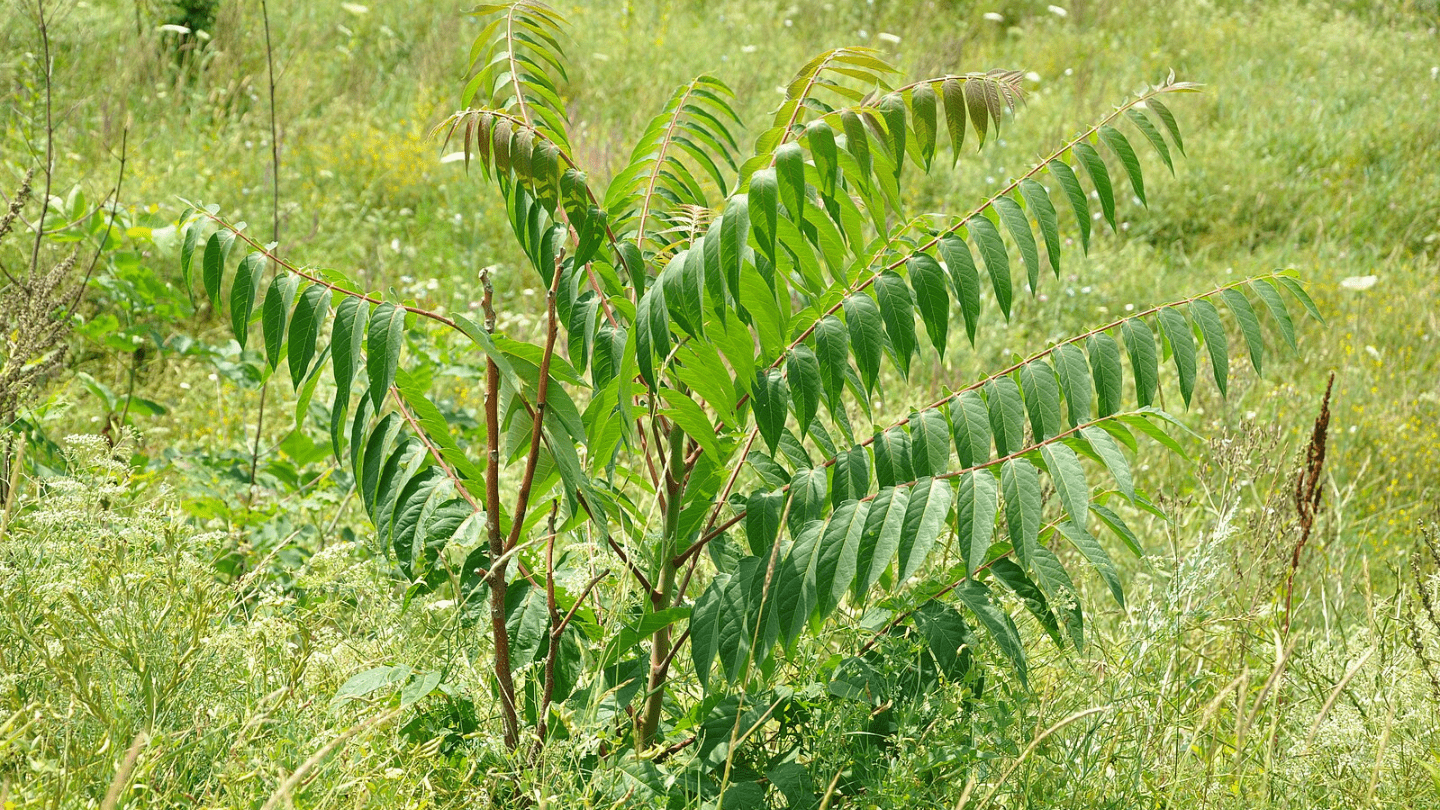
Tree of Heaven (Ailanthus altisimum)
Nicknamed Tree of Hell, this devilish invasive is known for its ability to reproduce RAPIDLY. It forms dense stands that crowd out other plants, and leaches harmful chemicals into the soil that prevent natives from growing.
And that’s not even the worst part—when Tree of Heaven is cut down, it triggers the plant to shoot up multiple saplings, which sprout up around the original plant like a multi-headed hydra.
STOP THE SPREAD: If you see this plant in your yard, try to remove it before the taproot develops. Attack it with daily maintenance, pulling up as much of each sprout as you can until you exhaust its root storage.
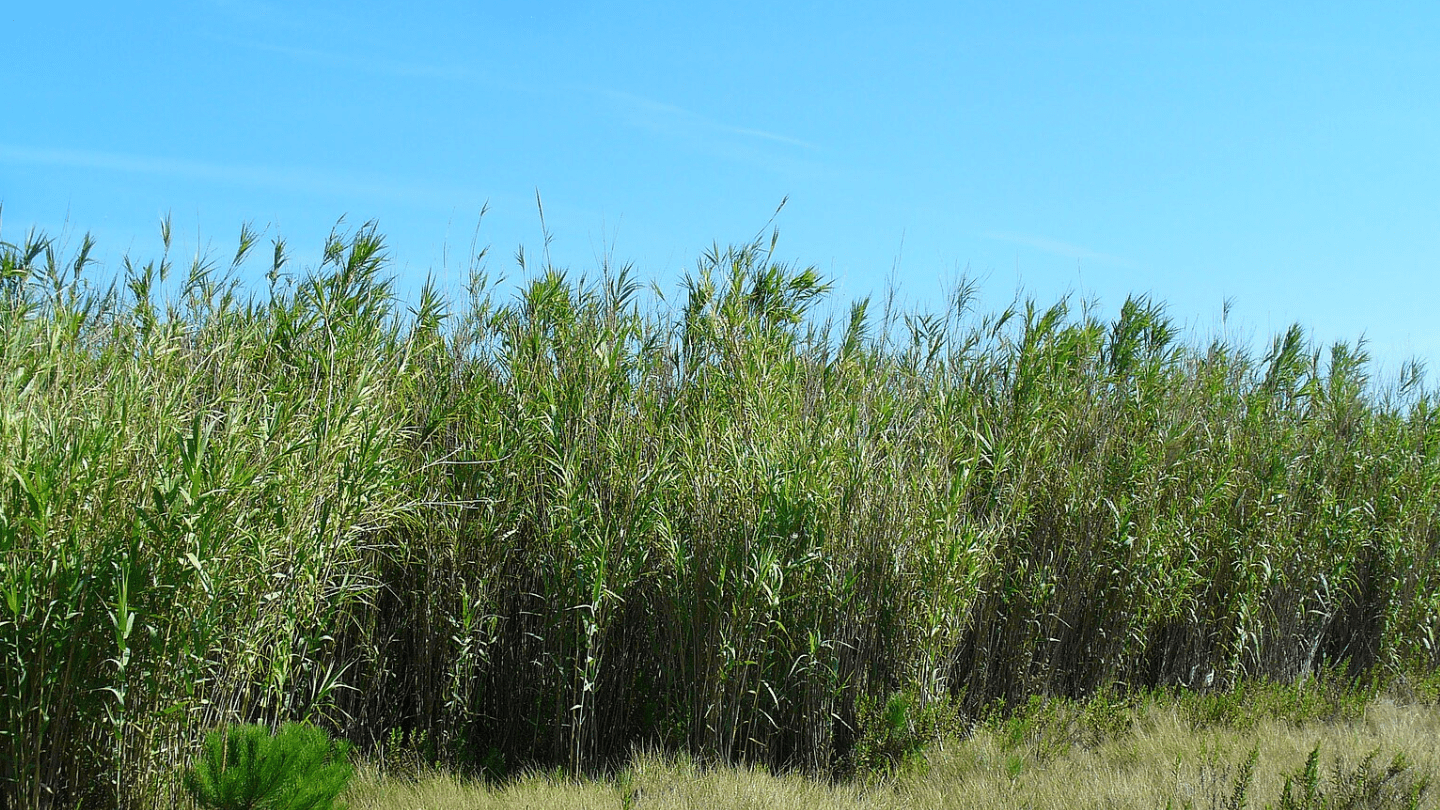
Giant Reed (Arundo donax)
This massive grass can grow up to four inches per day, reaching a height of 25 feet in about a year. In addition to displacing native plants, the reeds suck up massive amounts of water, can destroy important infrastructure, and greatly increase the risk of wildfire.
Each one of its nodes also has the potential to sprout into a new plant, which allows it to grow back quickly when damaged.
STOP THE SPREAD: While some people like to use these weeds as walking sticks, please avoid cutting partial pieces off—when they’re discarded, they can trigger new growth.
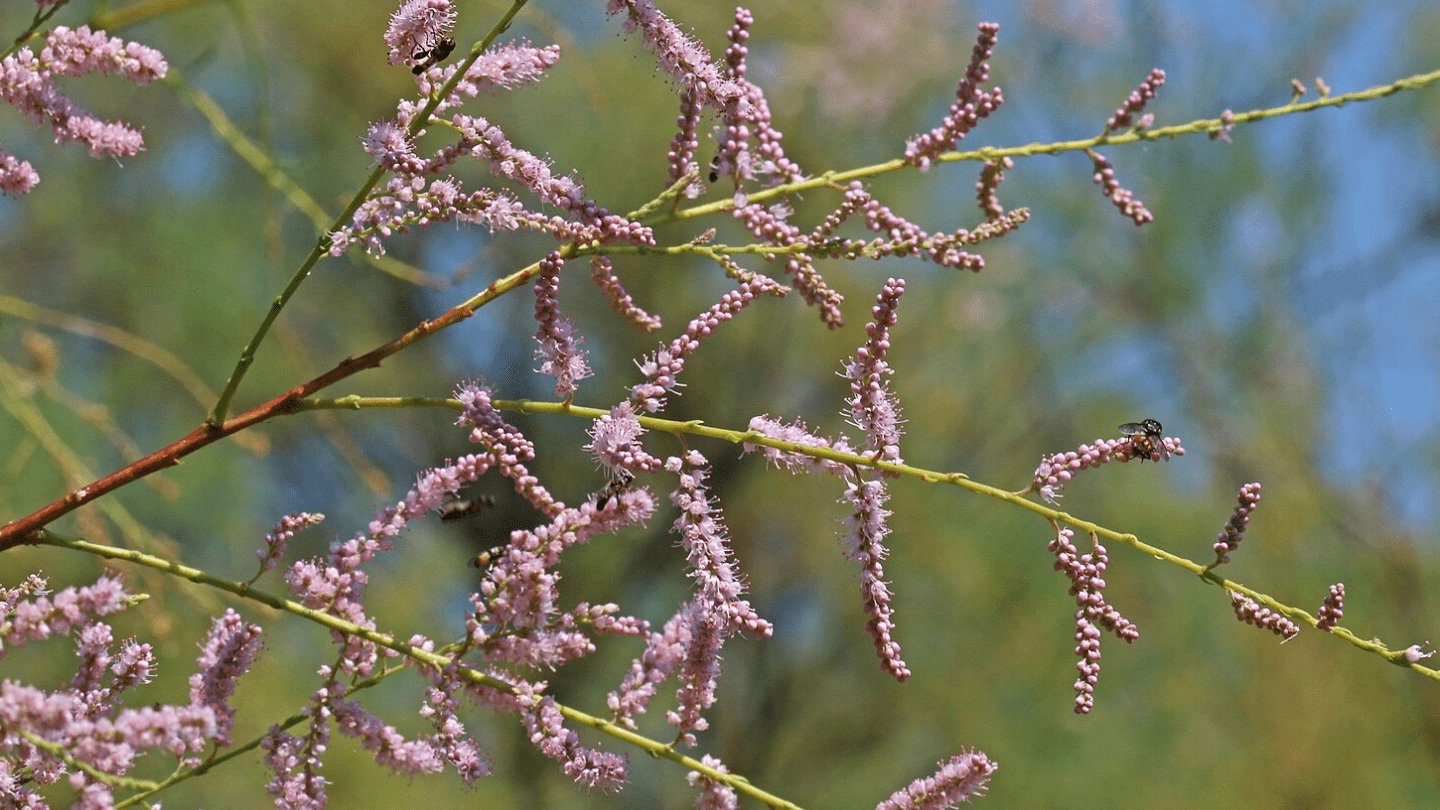
Salt Cedar (Tamarix ramosissima)
This plant’s name comes from its habit of depositing salt into the soil, which can make the area uninhabitable for native plants.
Common in riparian areas, it can also increase fire risk when it driesout—and readily sprouts back after fire before native plants can grow, creating a vicious cycle.
STOP THE SPREAD: When plants are small, in difficult-to-reach areas, or where herbicides can not be used, hand-pulling can help keep the salt cedar population in check!
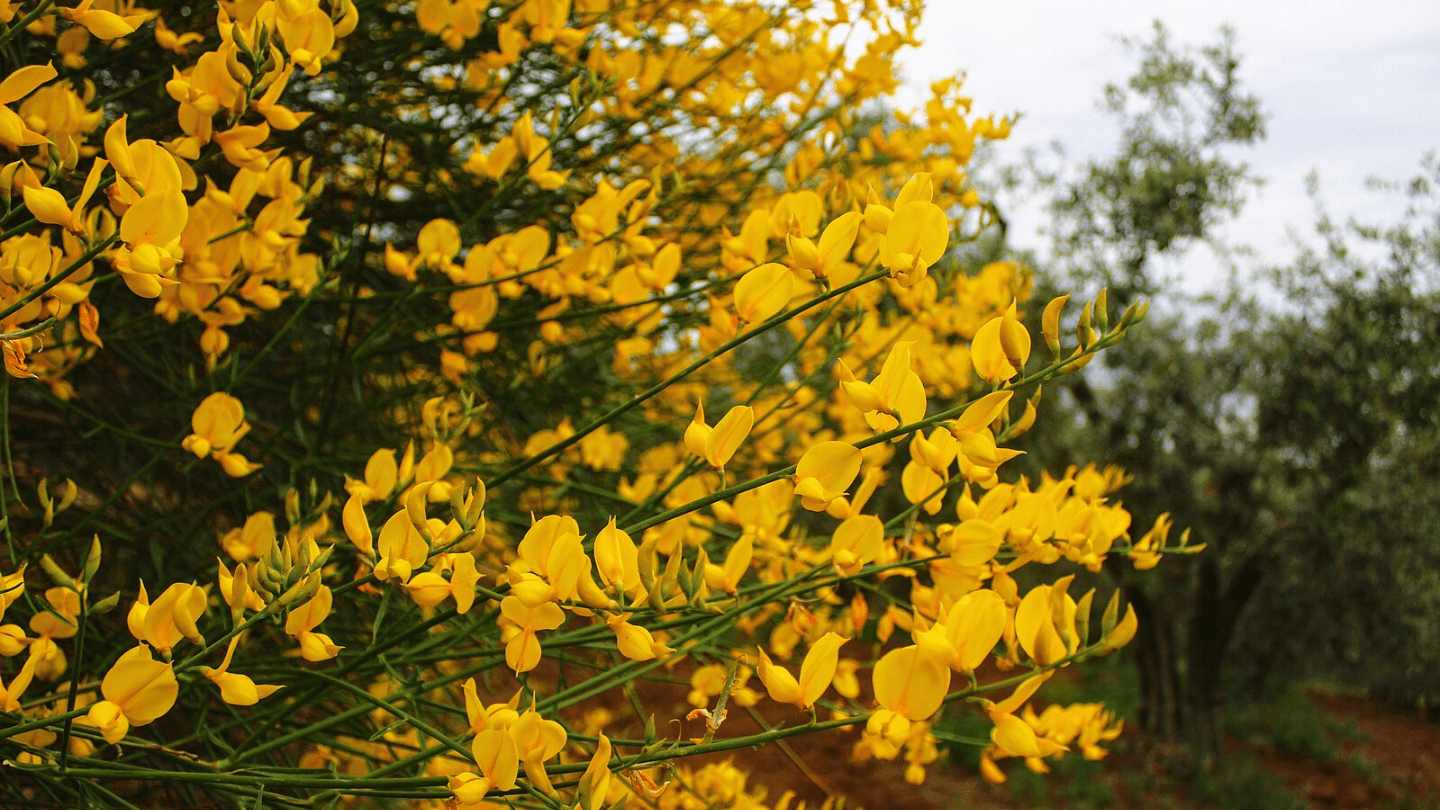
Spanish Broom (Spardium junceum)
This plant was once widely used to prevent hillside erosion, but unfortunately has a tendency to dominate the areas where it grows, creating dense monocultures.
When it dries out, it can fuel wildfires, and can even act as a fire ladder that carries blazes into tree canopies.
STOP THE SPREAD: Though invasive, this plant has beautiful blooms that smell great! Take them all when you see them to prevent them from going to seed. You can make a bouquet, or even use them as a natural dye.
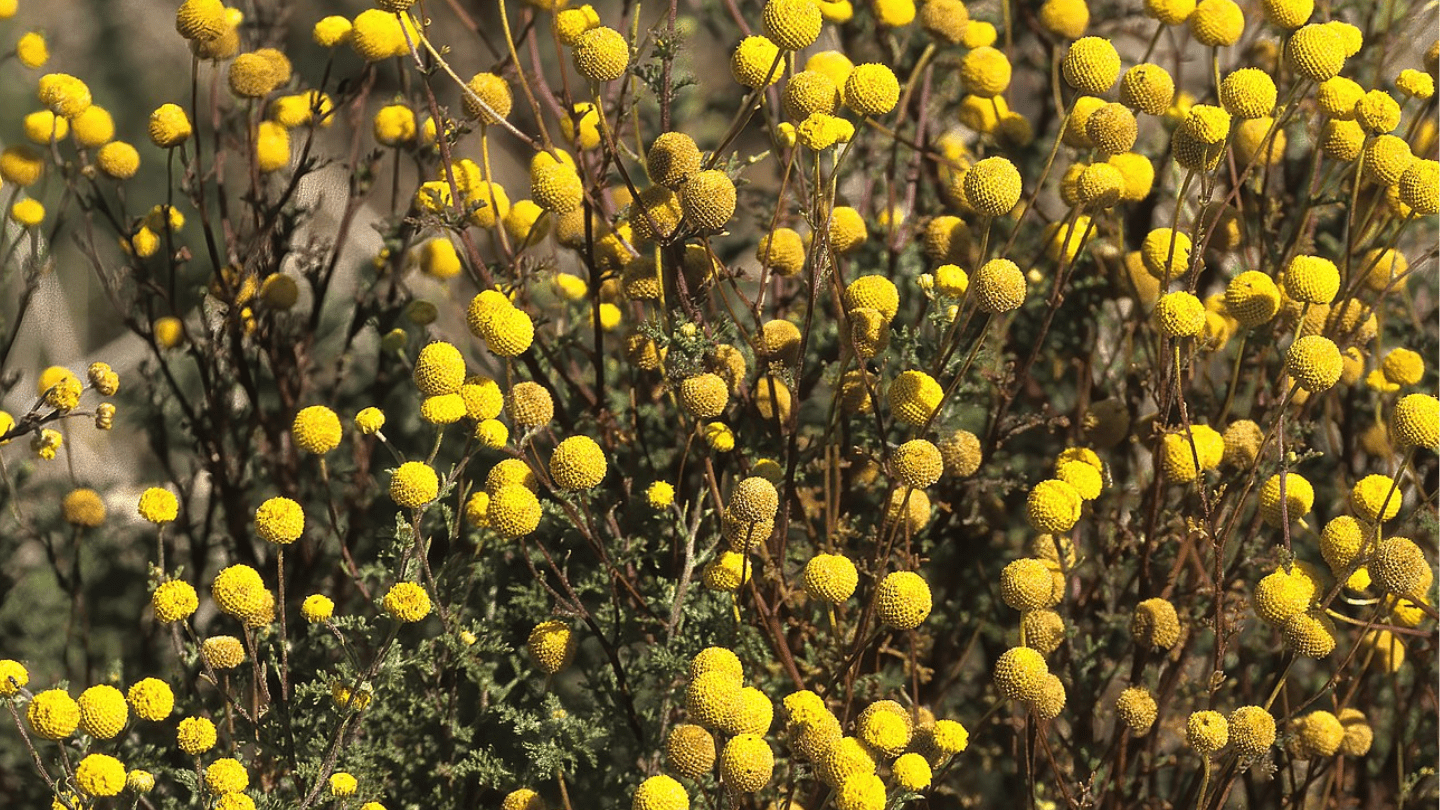
Stink Net (Oncosiphon piluliferum)
This plant is sometimes referred to as globe chamomile, but it doesn’t smell nearly as sweet as other members of the Asteraceae (or daisy) family.
These stinky, bulb-like flowers can create dense stands that threaten native habitats, and readily stick to everything from shoes to machinery, allowing them to spread quickly and widely.
STOP THE SPREAD: While it’s common in San Diego and Riverside, stink net hasn’t become a major problem in the Angeles National Forest yet. If you see it in LA, report it to the California Invasive Plant Council!
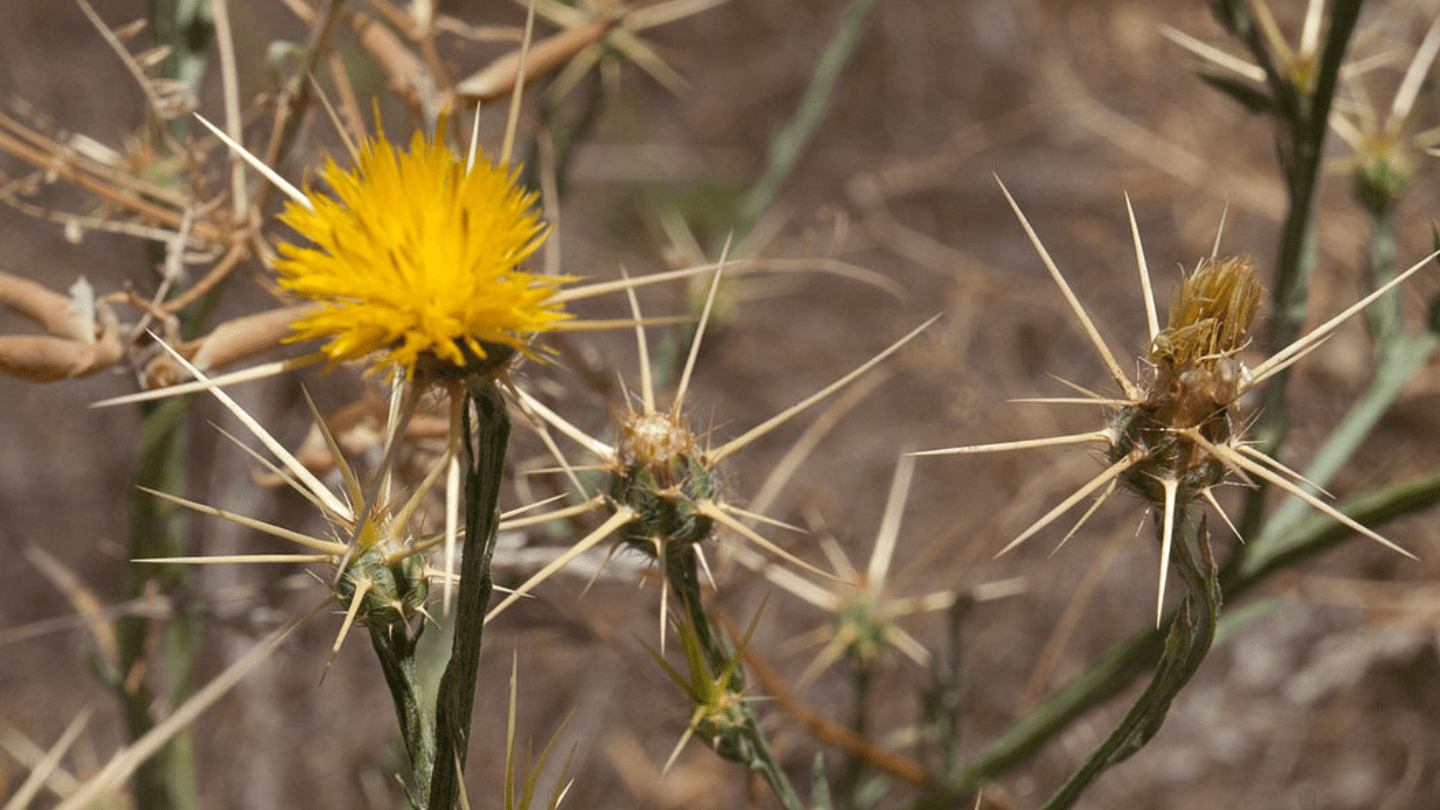
Yellow Star Thistle (Centaurea solstitialis)
This extremely spikey plant proliferates along roadsides and in other disturbed areas, depleting moisture and preventing the growth of native species. It has infested between 10 and 15 million acres in California, and can be resistant to eradication by mowing or burning because of its long root systems and fire-resistant seeds.
Some successful experiments have been done with biological pest control using insects that feed on its seeds!
STOP THE SPREAD: If you find this in your yard, the best time to remove it is during early flowering. Remove all above ground stem material or pull it out by the roots if you can!
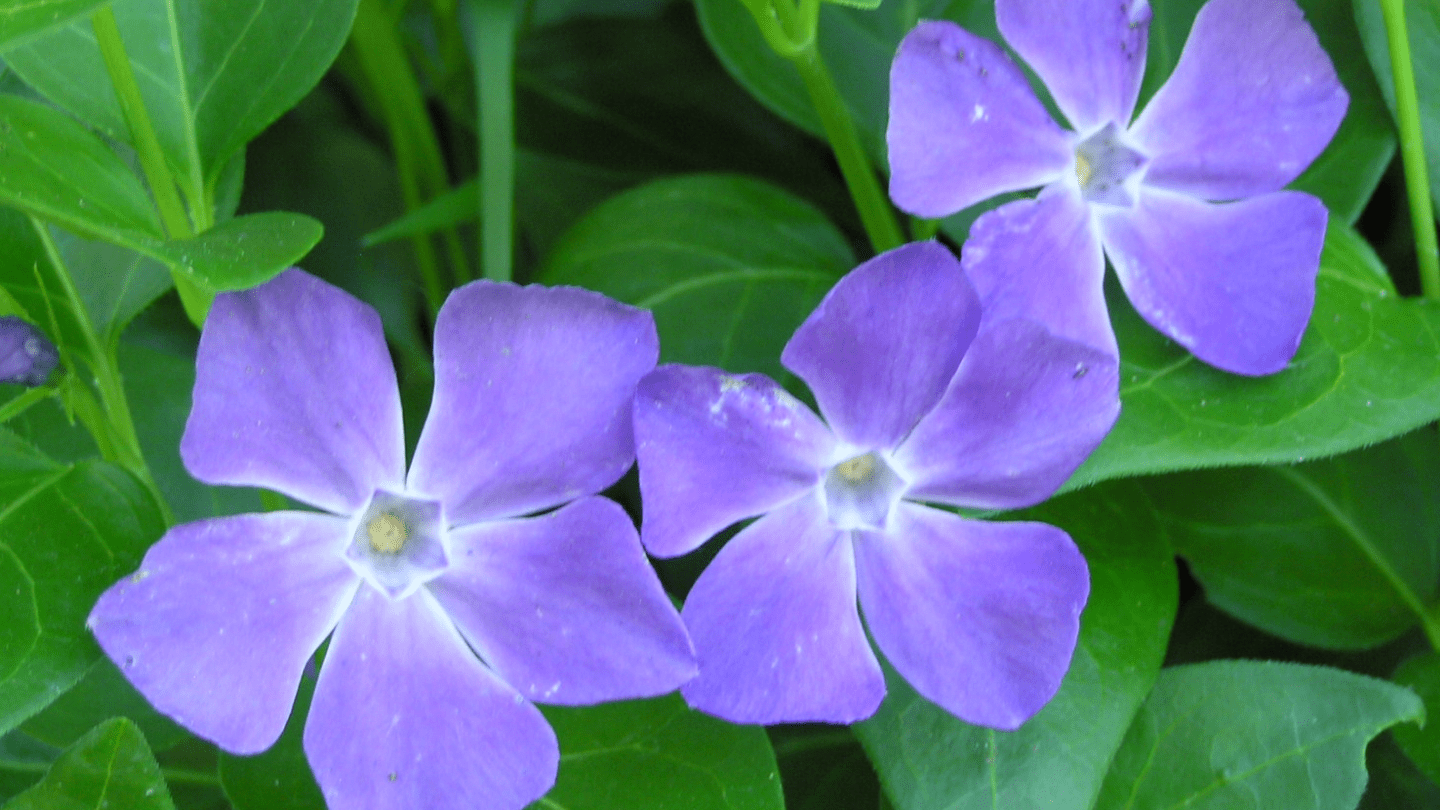
Greater Periwinkle (Vinca major)
This purple flower was first introduced to California as an ornamental plant, but has escaped the confines of the garden and become a quick-spreading invasive, especially in riparian areas.
A hardy ground cover, it chokes out natives, and small segments can be carried by water to start new infestations elsewhere.
STOP THE SPREAD: Avoid using this in your garden or landscaping project! Check out our Southern California Native Plant guide at the link in bio for native alternatives you can plant instead.
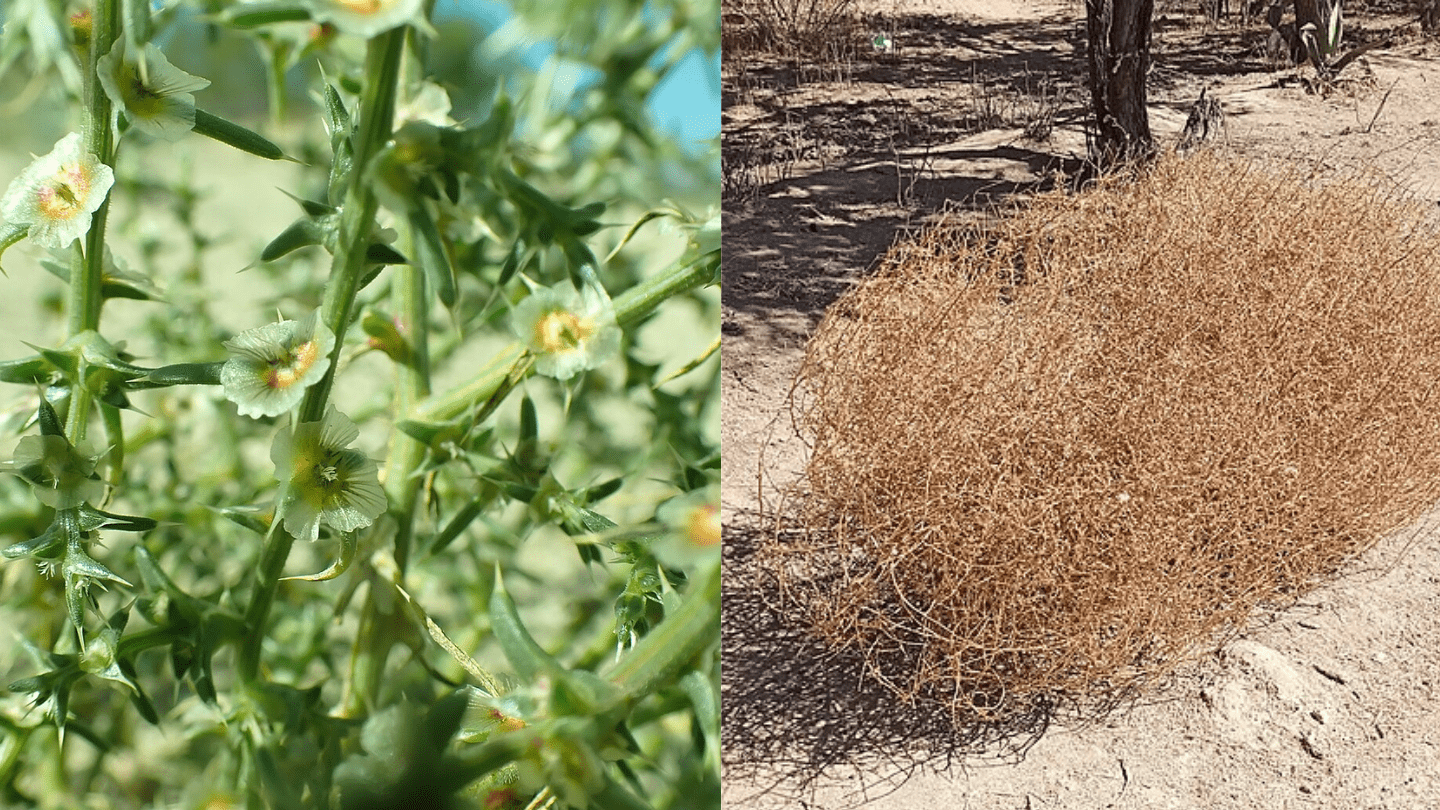
Russian Thistle (Salsola Tragus)
If you’ve ever seen a tumbleweed in an old western film, odds are it was Russian thistle. These pokey plants dry out late in the growing season and blow away with the wind, spreading thousands of seeds and becoming dangerous fire hazards.
It also hosts the beet leaf-hopper, an agricultural pest!
STOP THE SPREAD: Pulling or hoeing Russian thistle before it goes to seed can be effective, especially for small infestations.
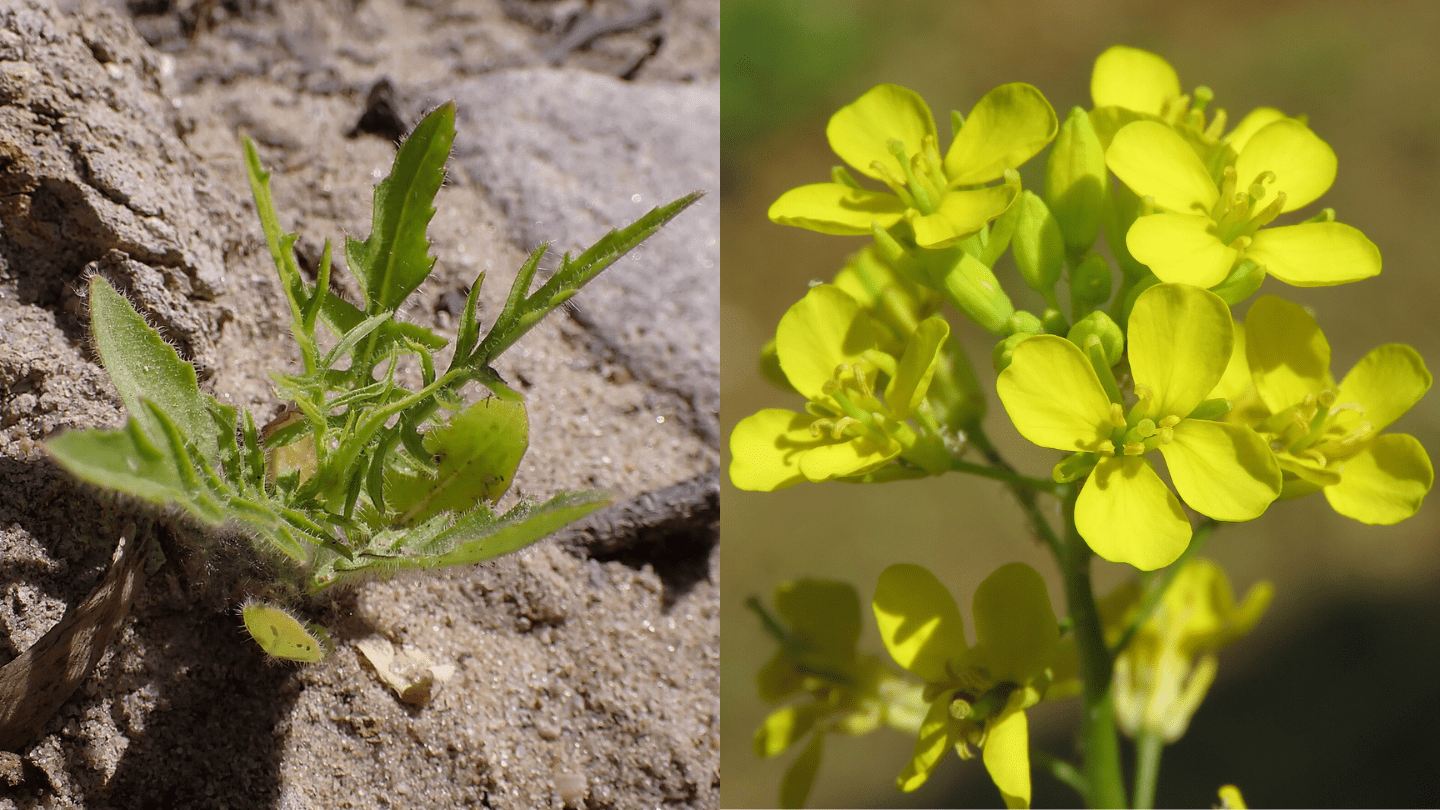
Mustards (various)
And of course, there’s the most notorious invasive of all—MUSTARD. Many are familiar with Black mustard (Brassica nigra), the prolific variety you’ll spot all over the hills of SoCal each spring. Introduced by Spanish colonizers, it leaches allelopathic chemicals into the soil that prevent other plants from sprouting, and creates fuel for wildfires.
But did you know we have other invasive mustards, too? Sahara mustard (Brassica tournefortii) is a low-lying mustard that has spread rapidly in deserts, and has recently been introduced in the Santa Clarita area. And Tumble Mustard (Sisymbrium altisimum) is an increasingly common variety that tumbles away in the wind, spreading its seeds far and wide!
STOP THE SPREAD: Mustard plants are edible, so pull them out by the roots and make yourself a tasty salad!

